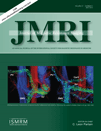Quantification of left ventricular indices from SSFP cine imaging: Impact of real-world variability in analysis methodology and utility of geometric modeling
Abstract
Purpose:
To assess the impact of “real-world” practice variation in the process of quantifying left ventricular (LV) mass, volume indices, and ejection fraction (EF) from steady-state free precession cardiovascular magnetic resonance (CMR) images. The utility of LV geometric modeling techniques was also assessed.
Materials and Methods:
The effect of short-axis- versus long-axis-derived LV base identification, simplified versus detailed endocardial contouring, and visual versus automated identification of end-systole were evaluated using CMR images from 50 consecutive, prospectively recruited patients. Additionally, the performance of six geometric models was assessed. Repeated measurements were performed on 25 scans (50%) in order to assess observer variability.
Results:
Simplified endocardial contouring significantly overestimated volumes and underestimated EF (–6 ± 4%, P < 0.0005) compared to detailed contouring. A mean difference of –34g (P < 0.0005) was observed between mass measurements made using short-axis- versus long-axis-derived LV base positioning. A technique involving long-axis LV base identification, signal threshold-based detailed endocardial contouring, and automated identification of end-systole had significantly higher observer agreement. Geometric models showed poor agreement with conventional analysis and high variability.
Conclusion:
Real-world variability in CMR image analysis leads to significant differences in LV mass, volume and EF measurements, and observer variability. Appropriate reference ranges should be applied. Use of geometric models should be discouraged. J. Magn. Reson. Imaging 2013;37:1213–1222. © 2012 Wiley Periodicals, Inc.




